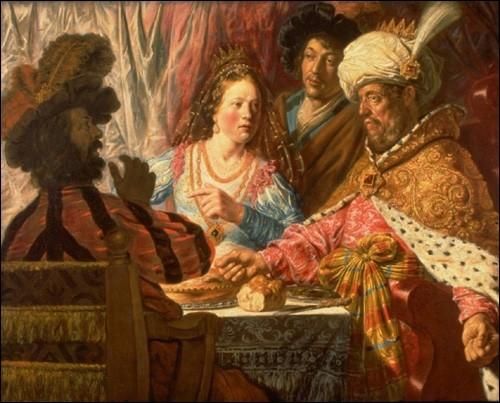Purim: Netanyahu’s Gift to Obama Both a Symbol and Warning
ANALYSIS

During his recent visit with Barack Obama in Washington, Israeli Prime Minister Benjamin Netanyahu reportedly gave the U.S. president a gift that carried heavy symbolic meaning with respect to Israel’s spiraling crisis with Iran.
Obama received from Netanyahu a copy of the Biblical Book of Esther, which tells the ancient story of how the Jews of Persia, which is modern-day Iran, fought back and thwarted a plot to annihilate them.
Clearly, Netanyahu made a link between the Persians of thousands of years ago and their descendants who may be developing nuclear weapons – a scenario many senior officials in the Israeli government believe poses a grave threat to the Jewish state.
“When it comes to Israel’s security, Israel has the right, the sovereign right to make its own decisions,” Netanyahu told Obama during a recent two-hour meeting in the Oval Office.
Obama, at least publicly, however, is asking Israel to tone down the warlike rhetoric and allow economic sanctions to strangle the Iranians into submission and force them into relinquishing their atomic weapons program.
“I know that both the prime minister and I prefer to resolve this diplomatically,” Obama said.
With his gift, perhaps Netanyahu was trying to express to Obama that if the Persians again try to massacre the Jews, Israel will fight back victoriously and prevent another chapter of genocide -- only with modern weapons.
On Wednesday night, Jews around the world will read the Book of Esther – a story that seems to have great relevance to what is happening in the year 2012.
Purim celebrates the deliverance of the Jews of ancient Persia from destruction.
As detailed in the Old Testament book, Haman, the royal vizier of the Persian emperor Ahasuerus, plotted to kill all the Jews in the 127 provinces of the vast Persian Empire.
Separately, after his wife Vashti refuses one of his orders, Ahasuerus has her executed and chooses a new queen -- he selects a young orphan named Esther, the ward of an exile from the land of Israel named Mordechai.(Esther didn't reveal to the emperor that she was Jewish).
Meanwhile, Mordechai discovers and foils a plot to assassinate Ahasuerus by two royal courtiers who are subsequently hanged.
Mordechai eventually earns the emperor's gratitude.
Complicating matters, of course, is Haman's plan to murder the Jews, including Mordechai, whom he hates.
When Esther informs her husband that she is Jewish, Ahasuerus orders Haman's execution -- however, it is too late to rescind the royal decree calling for the extermination of the Jews of the empire.
The king allows Mordechai and Esther to defend themselves and the Jews from attacks. This leads to the deaths of some 75,000 Persians, including Haman's 10 sons, who planned to murder Jews.
After the brutal fighting is over, Mordechai becomes the emperor's second-in-command and commences the first Purim to commemorate the salvation of the Jews from annihilation.
Interestingly, throughout history, organized attacks and pogroms against Jews coincided with Jewish holidays and festivals. For example, on Purim in 1942 Nazi soldiers killed 10 Jews in Zdu?ska Wola in Poland, apparently to exact vengeance for the long-ago murder of Haman's 10 sons by the Jews.
Adolf Hitler himself frequently cited the massacre of Persians as an example of Jewish violence and aggression and warned that a defeat of the Nazis would prompt a Purim-like killing of Germans. (Indeed, by the Nazis reckoning, the Persians were fellow Aryans.)
Similarly, when the Syrians and Egyptians launched a war against Israel in October 1973, it coincided with Yom Kippur, the holiest day in Judaism (hence, the “Yom Kippur War”).
Now in 2012, an attack on Iran during Purim would be highly symbolic. Perhaps Netanyahu fancies himself as a modern-day Mordechai and views Iranian President Mahmoud Ahmadinejad as a contemporary Haman.
Indeed, like the ill-fated Haman, Ahmadinejad has also called for the annihilation of the Jews and Israel.
© Copyright IBTimes 2024. All rights reserved.





















